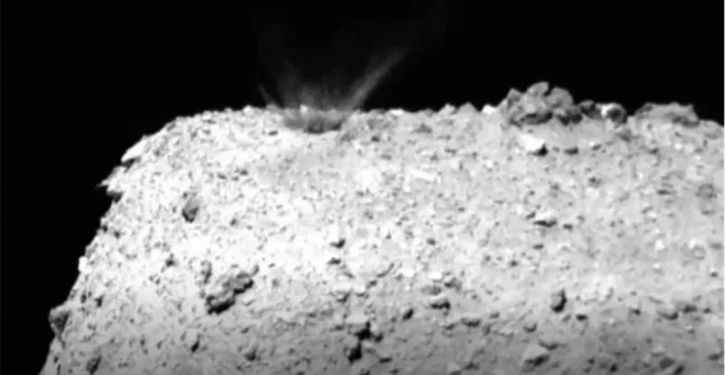
The New York Times reports that “killer asteroid-spotting software could help save the world” from devastating asteroid strikes”:
Telescopes surveying the skies for errant space rocks are overseen by astronomers…With so much inky sky to peruse, scientists rely on algorithms to spot suspicious and speedy objects, including asteroids that may threaten Earth.
Conventional algorithms need four images, taken during a single night, of a moving object to confirm whether it’s a genuine space rock. But new software developed … cuts the number of necessary nightly observations by half, boosting the ability of observatories to quickly identify these lithic projectiles. And the program, named HelioLinc3D, has already found a near-Earth asteroid that older surveys had missed…. an asteroid that ATLAS and similar surveys had failed to see — one 600 feet long, the type that could devastate a large city.
Named 2022 SF289, the asteroid is classified as “potentially hazardous,” based on its size and proximity. But although this asteroid’s closest approach is within 140,000 miles of Earth’s orbit, half the distance to the moon, there is no impact risk for the next century and very likely for many millenniums in the future.
HelioLinc3D won’t just bolster the efforts of pre-existing asteroid surveys. It was specifically designed for the Vera C. Rubin Observatory in Chile. The observatory’s huge mirror, massive camera and expansive eye will see pretty much everything in the night sky in unprecedented detail, from far-flung collapsing stars to sketchy-looking asteroids swimming in our galactic backwater.
Hoping to catalog as many objects as possible, the Rubin telescope is designed to speedily sweep across the sky each night. Without HelioLinc3D, the observatory would be unable to reveal the asteroid-filled neighborhood around our planet. “The discovery of 2022 SF289 is the proof,” Ari Heinze, the principal developer of HelioLinc3D and a researcher at the University of Washington, said.
The world’s family of asteroid-hunting telescopic surveys have so far found more than 32,000 near-Earth asteroids. Most of those capable of inflicting planet-scale devastation have been found because it’s easier to spot bigger rocks glinting in sunlight.
But asteroids at least 460 feet long — those with the potential to wipe out cities or small countries, should they impact Earth — are far fainter and are considerably more difficult to locate. They are mostly undiscovered at present, with about 10,500 found out of a projected total of roughly 25,000….
“It took us about 200 years to go from one known asteroid to a million. Depending on when we start, it will take us between three and six months to double that,” Mario Jurić, an astronomer at the University of Washington and the HelioLinc3D project’s team leader, said.
More at this link: https://archive.ph/r8TuR



